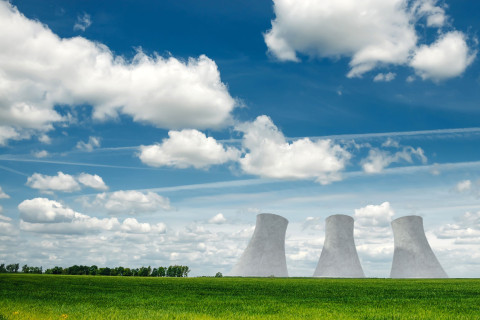The aim of MSc Janne Koivukoski's dissertation was to explore how the different radiation events, especially the Chernobyl accident, have affected the development of the radiation monitoring system while using technological advancements. Special focus was put on the measuring and data handling technology used and on the development of the monitoring station network.
ABSTRACT
The handling of measurement data, the use of geographic information systems, presentation technology and data transfer methods were examined because of their significant part in radiation data monitoring. This is used as a basis in the analysis of the situation picture that has been drawn up and transmitted to the users.
The main hypothesis of the dissertation is that different radiation events, especially the Chernobyl accident, have affected the development of the national radiation monitoring system. The second hypothesis is that it is possible to form the situation picture required for civil protection from decision-making based on the external radiation measurements.
The structural examination of the monitoring network presented in the published articles forms the theoretical framework of the study. The empiric part of the study consists of collecting measurement and other data connected to the development of the monitoring network presented in the articles. The dissertation includes the analysis of a general historical view of the development of the Finnish radiation monitoring network system, the cooperation of the different authorities in the radiation monitoring system and forming of the radiation situation picture.
In article I the early stages of the radiation monitoring system, development of the data processing of the radiation monitoring system and the generations of the radiation monitoring system were described. According to the study, the Finnish monitoring network of external radiation is of high quality and has quite an extensive regional coverage.
Article II investigated the spreading of fallout from the Chernobyl accident. Regional qualitative analysis made with simple Geiger-Müller radiometers showed that it is possible to produce a good situation picture with those methods.
Article III examined the history and development of the radiation monitoring system and the knowledge gained from experience of the measuring activity. Trends for the near future were also outlined.
Article IV investigated results of the quality and extent of the atmospheric fallout of radionuclides in Finland carried out using different measuring methods. The article described how, with the help of information exchange and co-operation, it is possible to respond to the information needs of the media and public.
Article V studied the effect of meteorological factors for the spreading of fallout in Finland. Meteorological radar observations and measurements carried out at ground level were used. It was found that the fallout can be roughly estimated with the help of routine meteorological observations. Furthermore, it was noticed that it is possible to use weather radar data for clarifying small-scale phenomena better and thus improve the early warning system.
The thesis consists of five articles and an introductory part. In the introductory part, the studies of this thesis are set into a wider framework of radiation monitoring development processes and the results of all five articles are combined together. The articles show how the development of the radiation monitoring system was connected to the radiation events, especially the Chernobyl accident, by combining the results from measurement and information technology in use at the time. Furthermore, it is concluded that the good cooperation of the different actors' (the authorities, the companies and communities) made the use of radiation monitoring data in the forming and decision-making of the situation picture possible.
The doctoral dissertation of MSc Janne Koivukoski, entitled Chernobyl accident as a turning point of the developing of the radiation monitoring system will be examined at the Faculty of Science and Forestry on the 26th April at 12 noon in Kuopio and online. The opponent in the public examination will be Docent Mika Hyytiäinen, National Defence University and the custos will be Professor Petro Julkunen, University of Eastern Finland. The public examination will be held in Finnish.
Link to the online event (in Finnish)



